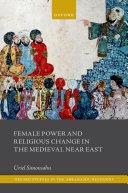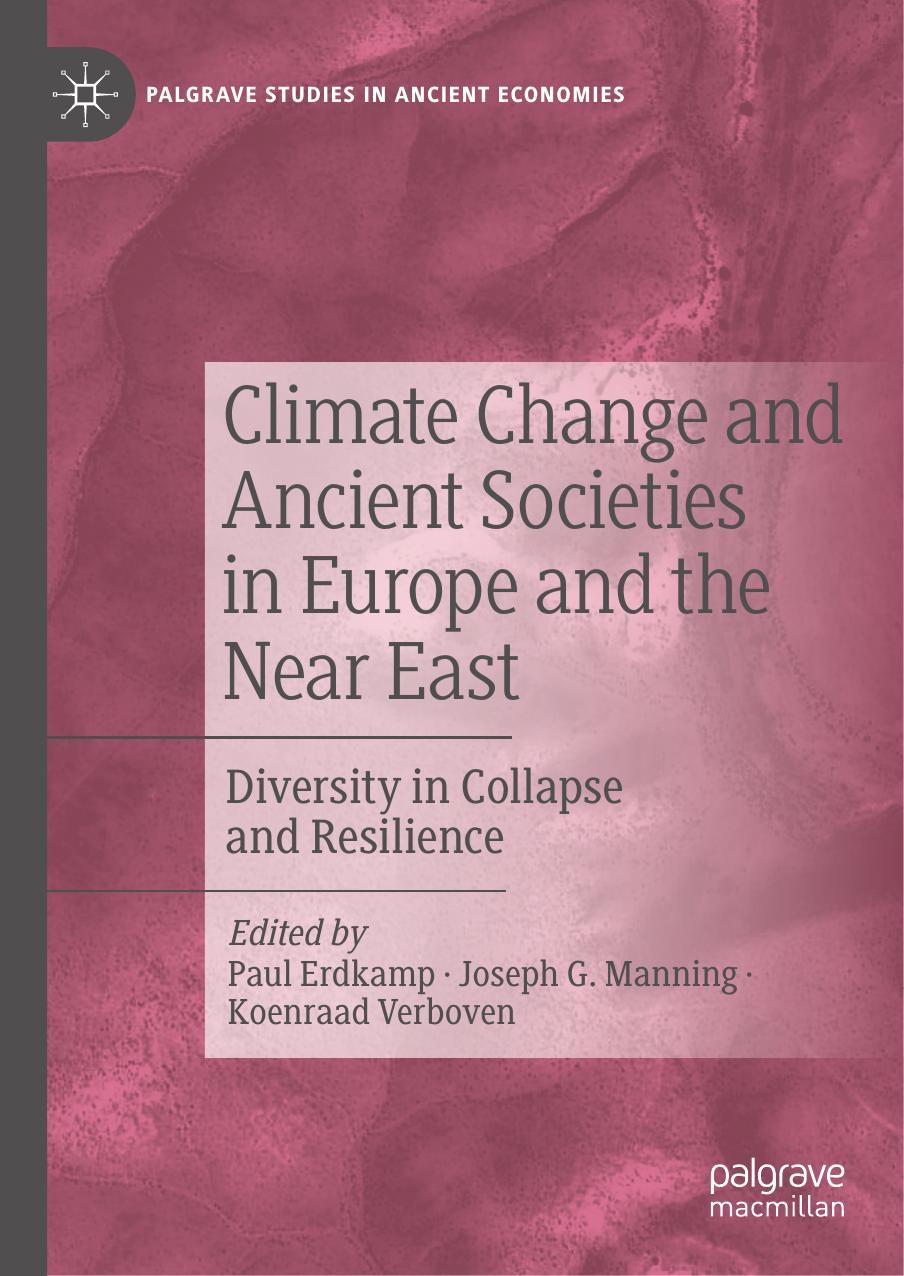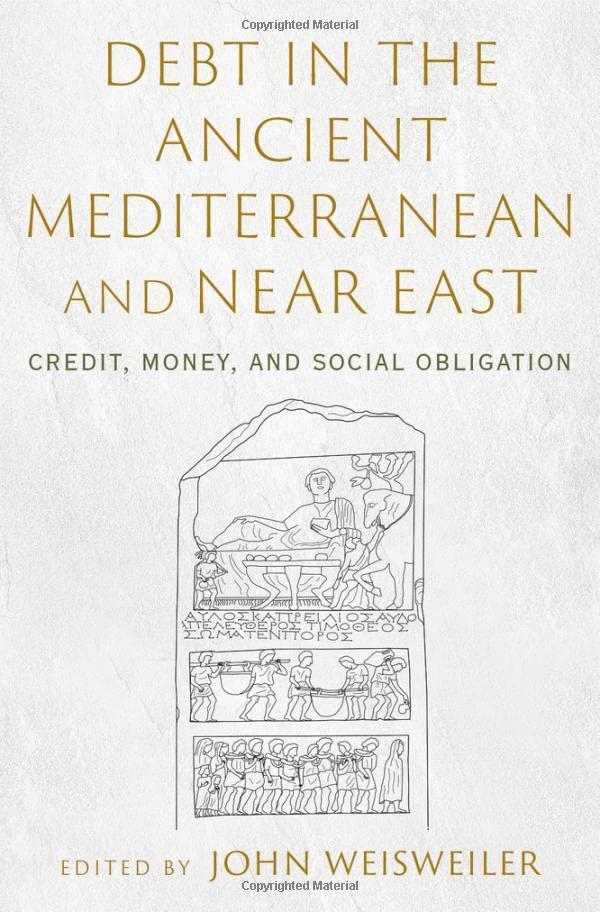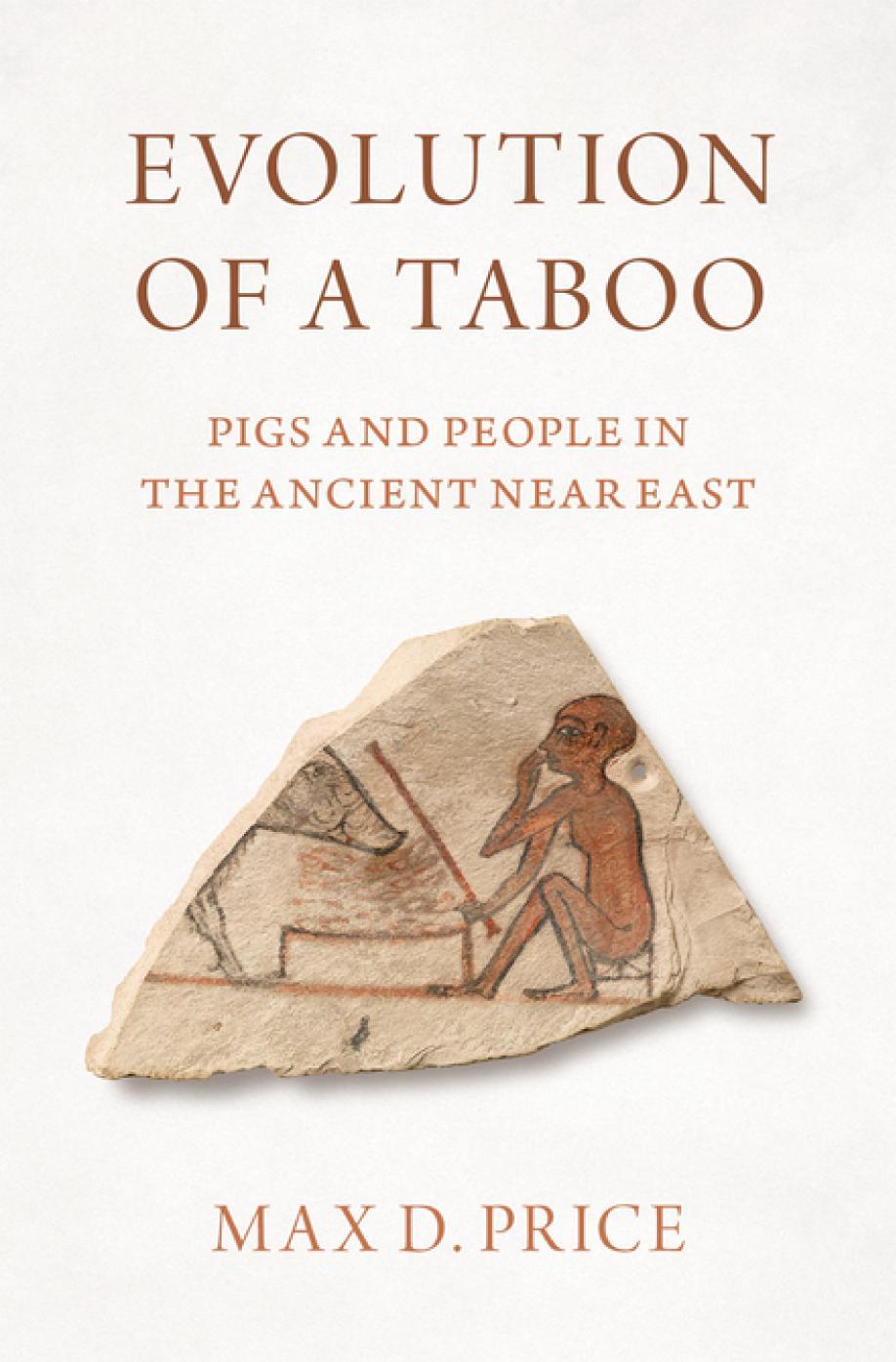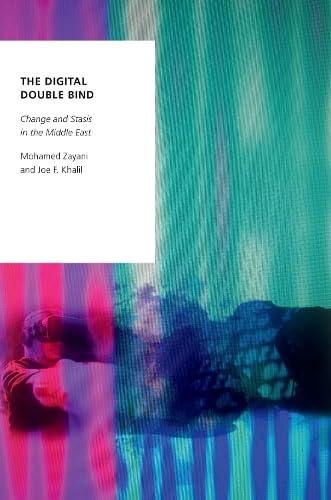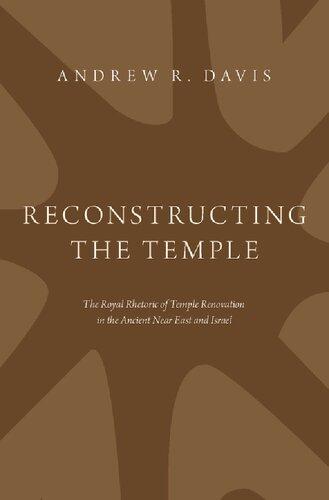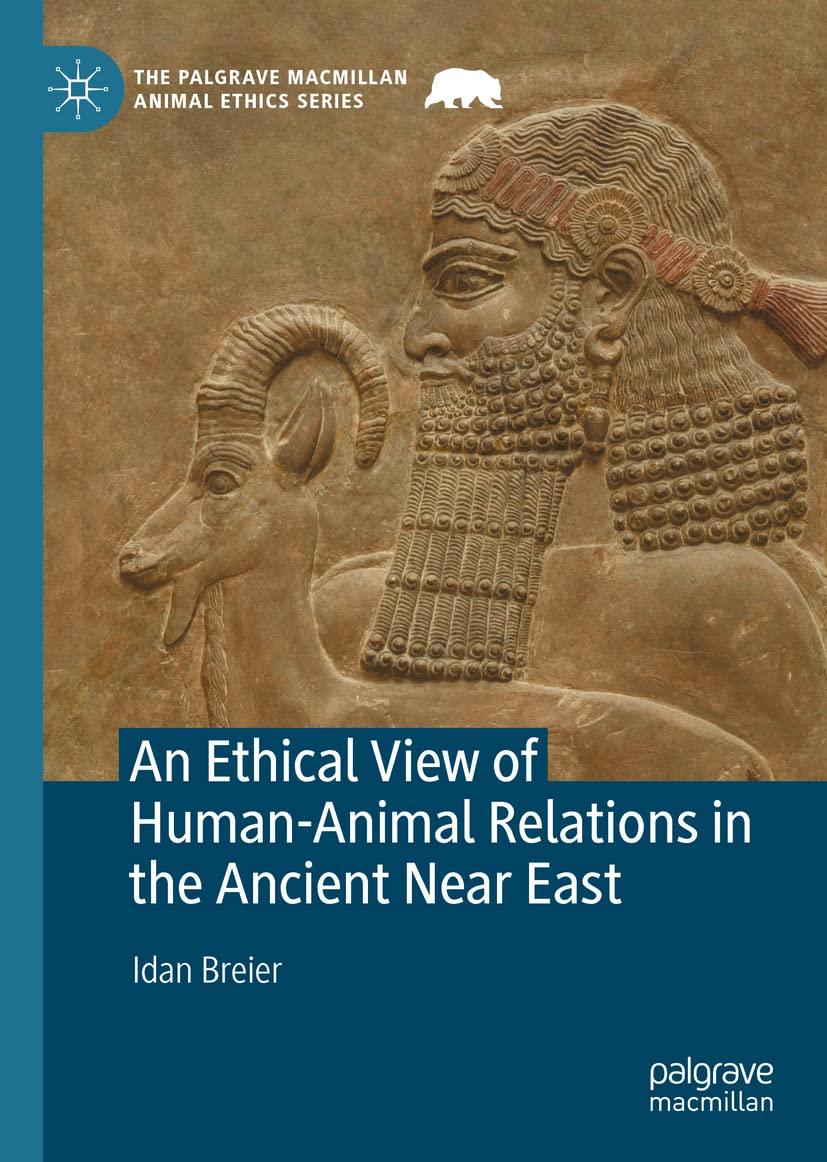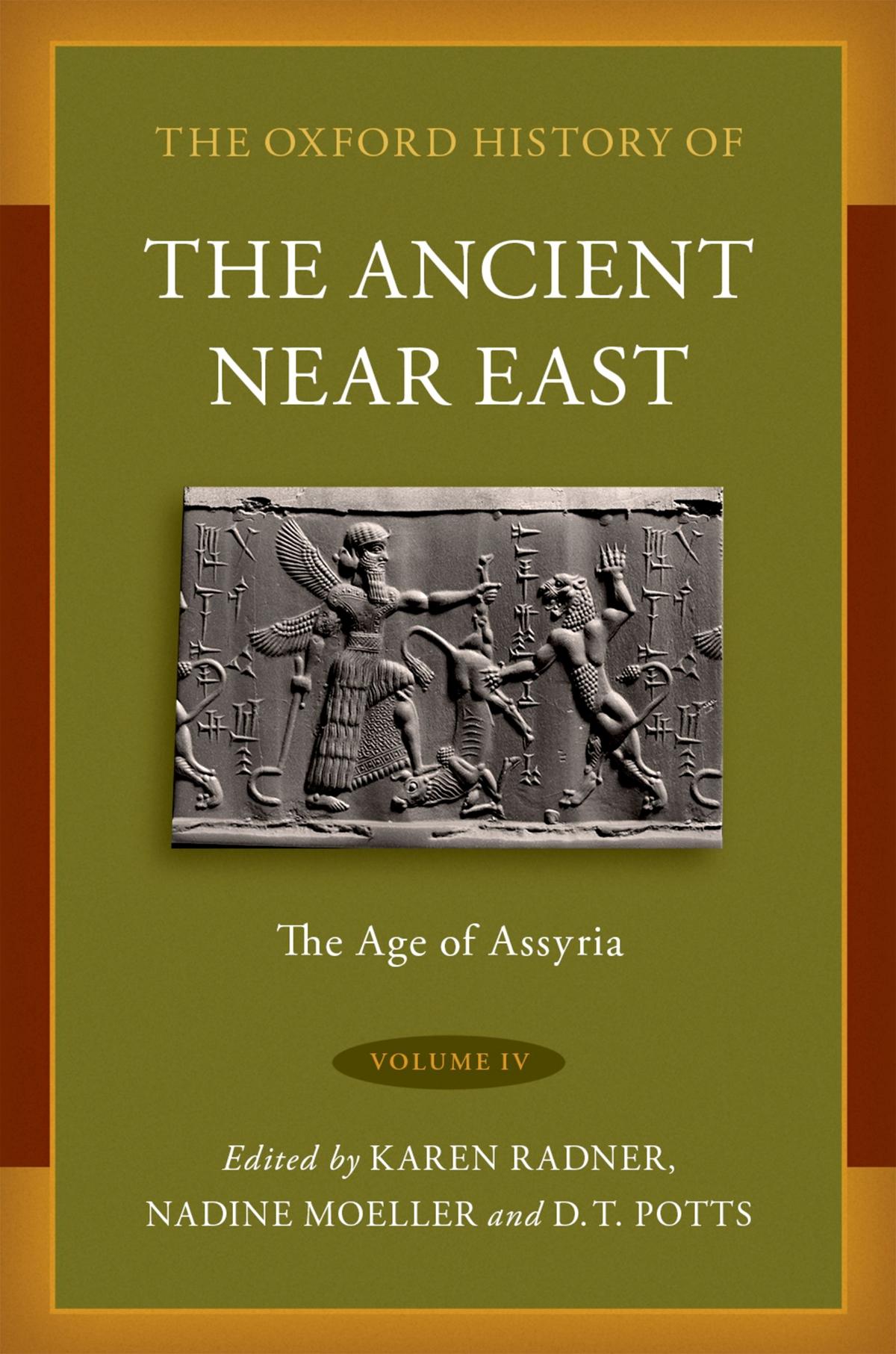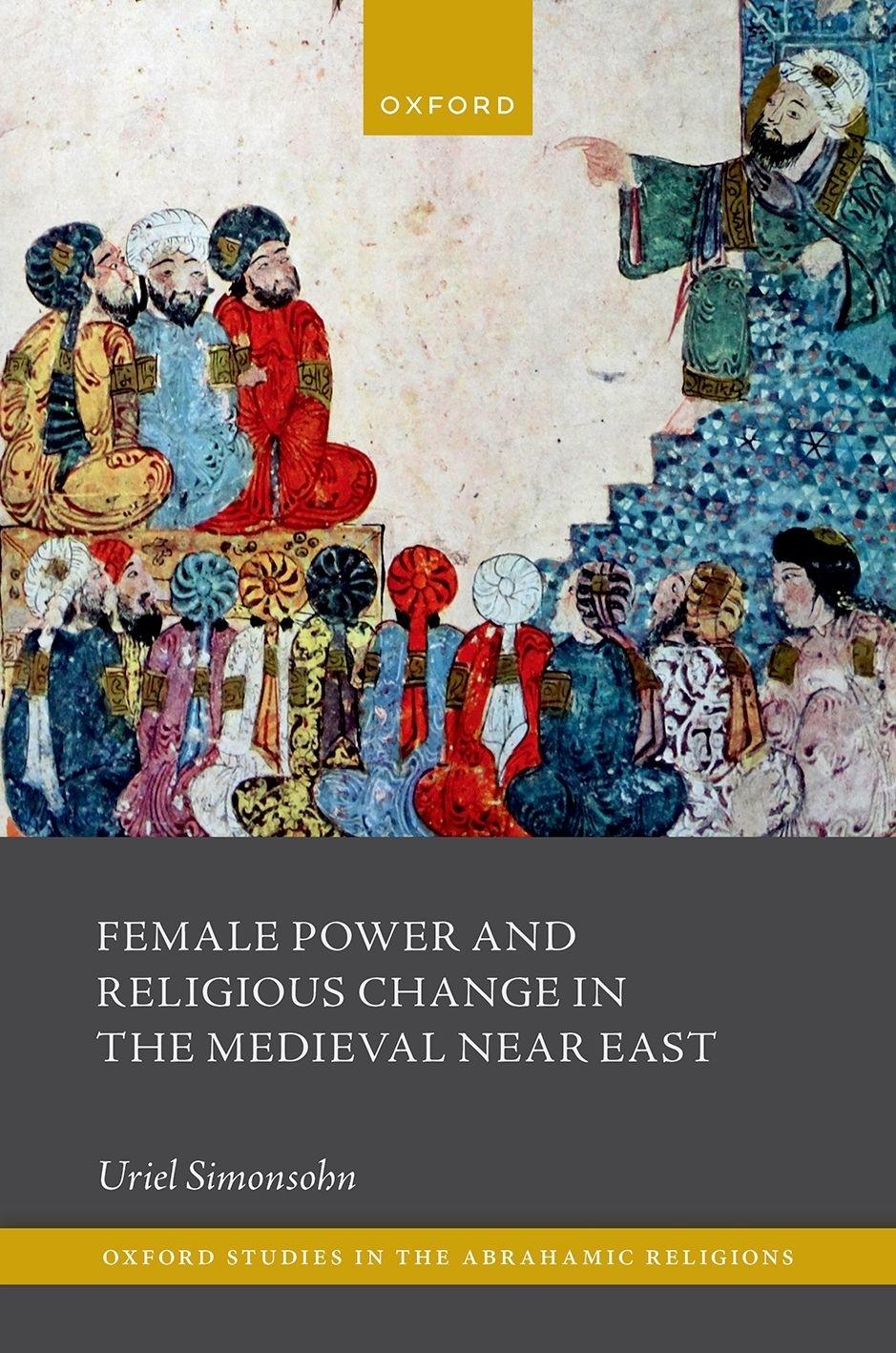Acknowledgments
The seeds of this project were sown in 2013, when I had the good fortune to join a team of excellent scholars at Ben-Gurion University’s Center for the Study of Conversion and Inter-Religious Encounters. It was thanks to countless formal and informal discussions that were held there that I began to develop my ideas about religious conversion and the significance of kinship ties for mobilizing, or obstructing, religious change. Later, over the years, various institutions afforded me the invaluable peace and comfort necessary for immersing in research and writing. In 2015, I had the privilege to be part of a research group led by Dorothea Weltecke at the University of Konstanz Kulturwissenschaftliche Kolleg. At Konstanz I benefited from the wisdom and insights of close colleagues, including Ana Echeverria, Alexandra Cuffel, and Clara Almagro-Vidal. In 2017, I spent two months at the Helen Gartner Hammer Scholars-in-Residence Program at Brandeis University. Here discussions with local scholars, in particular Bernadette Brooten, contributed immensely to my thoughts about how to look at gender issues in a historical setting for which the extant records offer meager direct evidence. It was also during this time that I initiated with Oded Zinger the research group “Kinship and Community in the Early and Medieval Islamic Mediterranean,” generously supported by the Haifa Center for Mediterranean History. The meetings the group has held in Haifa and Oxford over the past years have been incredibly instrumental for my work. Finally, I was able to bring this project to conclusion thanks to the year I spent at the Israel Institute for Advanced Studies in Jerusalem in 2020–21. The setting of the campus of the Hebrew University as well as the peaceful
routine offered by the institute were ideal for the laborious task of putting my ideas into writing.
Although clearly of a solitary nature, the historian’s work is highly reliant upon the feedback, ideas, and suggestions of their peers. In my own case, I am grateful to have had the good fortune to share my work with a great many wonderful colleagues. Avner Giladi has been not only a close friend, but also a mentor and a role model. To Ido Shahar I owe thanks for his challenging comments and camaraderie. Luke Yarbrough has been a close friend and a partner to more than one project. And Christian Sahner has been a generous colleague, with whom I have had many fruitful conversations.
In addition to the two anonymous reviewers, drafts of various chapters of this book have been read and commented on by Avner Giladi, Simcha Gross, Youval Rotman, Christian Sahner, Ido Shahar, Dina Stein, and Luke Yarbrough. I have also profited from the wisdom and critique of the following colleagues: Keren AbbouHershkovits, Arezou Azad, Karen Bauer, Massimiliano Borroni, Janet Carsten, Yaniv Fox, Eugenio Garosi, Yitzhak Hen, Nimrod Hurvitz, Moshe Lavee, Regev Nathansohn, John Nawas, David Nirenberg, Arietta Papconstantinou, Micha Perry, Gregor Schwarb, Shai Secunda, Zur Shalev, Ephraim Shoham-Steiner, Adam Silverstein, Jack Tannous, David Wasserstein, Moshe Yagur, Avraham Yoskovich, and Oded Zinger.
I would like to extend my appreciation to Leigh Chipman for editing the manuscript and to Alia Hijazi for assisting in the early stages of my research. I wish also to thank the editors of the Oxford Studies in the Abrahamic Religions—Adam Silverstein and Guy Stroumsa—for their vote of trust and to the editorial team at Oxford University Press for their hard work along the way.
Finally, I wish to thank my wife Noa and our two children, David and Ella. Had it not been for their love, good counsel, comfort, and, at times also perseverance, I would not have been able to carry out this and many other projects over the years.
Noteontransliterationsystems,translations,dates,andreferences
Listofabbreviations
In Quest of Female Power in the Medieval Near East Contours of Family Dynamics
“Even though it be against yourselves, or your parents and kinsmen” (Q 4: 135): The Prioritization of God over Family
Religiously Mixed Families as Sites of Competing Religious Traditions
“No bearer of burdens will bear the burden of another” (Q 53: 38): The Liminal Position of Women in Religiously Mixed Families
Female Conversion to Islam: Religious Defiance and Feminine Resistance
6.
Precarious Gatekeepers: Female Power and Religious Conflict
The Paradox of Female Religious Power
Bibliography Index
Note on transliteration systems, translations, dates, and references
Post Hijra years are given in accordance to both the Hijri/lunar and Gregorian calendars (e.g. 1/620). Centuries are given in accordance to the Gregorian calendar only. Names of well-known figures (e.g. Muhammad), places (e.g. Baghdad), and foreign nouns listed in the OED (e.g. qadi, hadith) are given without transliteration. The following transliteration systems have been adopted: IJMES for Arabic, JQRfor Hebrew, and GEDSHfor Syriac. Biblical citations are of the New Revised Standard Version and Qurʾanic ones are of A. J. Arberry, TheKoraninterpreted.
References to both primary sources and secondary studies have been abbreviated and are listed in the following order: author’s name, abbreviated title, volume: page (e.g., Ibn Hishām, al-Sīra alnabawiyya, 3: 287). Full references are found in the Bibliography.
Ar.
b.
Bodl. MS Heb
bt.
b‘AZ
bBekh
bGit
bKetub
bNid
bQid
bYeb
CUL. Or.
d.
ENA
Eng. EI2
EI3
EQ
fl.
Fr.
Ger.
Heb. mKet
mQid
In Quest of Female Power in the Medieval Near East
This book engages with two levels of scholarly discussion that are all too often treated separately, namely the Islamization of the Near East and the place of women in pre-modern Near Eastern societies. In what follows, I shall argue that these two lines of inquiry can, and should, be read in an integrative manner. Put differently, an adequate assessment of historical themes, such as conversion to Islam, Islamization, religious violence, and the regulation of Muslim–non-Muslim ties must attend to the relatively hidden, yet highly meaningful, female side of things. This book is not about the history of women in Muslim-dominated lands, but about the history of Islam from the perspective of female social agents. Women, I argue, irrespective of their religious affiliation, possessed crucial means for affecting or hindering religious changes, not only in the form of religious conversion but also in the adoption of practices and the delineation of communal boundaries. A focus on the role and significance of female power in moments of religious change within family households offers a historical angle that is relatively absent from modern scholarship. Rather than locating signs of female autonomy or authority in the political, intellectual, religious, or economic spheres, the present endeavor is concerned with women’s little recorded, yet highly significant, role due to their kinship ties.
The literary materials chosen for this project originated in the lands between Iran in the east and Egypt in the west over centuries that span from pre-Islamic times to the later middle period of Islamic history (twelfth–thirteenth centuries CE). The women discussed in this book were often active in domains of a rather private nature, or
at least that fell outside the interests of historiographic recordings. This state of affairs has dictated both the thematic focus of the book and its methodology: By considering a rich and diverse collection of literary evidence, the study uncovers expressions of female power in the context of religiously mixed family settings. It explores women’s significance as mothers, wives, daughters, and sisters in moments of religious change within their households. These women, it shall be argued, possessed crucial practical and symbolic means to serve as brokers of religious practices, as agents of religious conversion, and as communal gatekeepers.
It shall be further argued that patriarchal conventions did not hinder non-Muslim women from introducing non-Islamic rituals and objects into Muslim households, or Muslim women from drawing other family members to their religion. Although the discussion in the ensuing chapters moves back and forth across dichotomies such as authority vs. submission or choice vs. expectation, these concepts were in fact mutually constituted and dialectically inseparable. This book seeks to show that what might appear to the modern observer as a state of social inferiority was in fact a source of agency; that operating within the limitations of male authority offered a variety of opportunities to advance personal ends; and, that male stereotypes of female behavior were in fact a reflection of female power. Thus, while dichotomies might seem like oversimplifications of a complex social world, their employment is unavoidable in order to highlight subtleties and nuances of social situations.
Religion, religious communities, and religiously mixed families
Historians and anthropologists have wrestled with the adequacy of the term “religion” for defining the set of principles that constitute the markers of a communal identity that is based on cultic affiliation.1 A similar critique seems to hold valid with regard to the
translation of the Arabic dīn, Hebrew dat, Syriac haymānutā and dḥeltā, Pahlavi dēn, and so forth, as “religion.” Although these terms are code for different perceptions, experiences, and normative orders that emanate from an identification with a divine entity, the modern concept of religion does not do them justice. This leaves us, however, with the options of either specifying an exact term for each so-called religious tradition, or of resorting to a non-Western terminology. Alternatively, however, we may choose to retain the use of “religion,” while acknowledging its pitfalls and therefore treating it as a concept that requires contextual definitions. At the base of this latter approach stands a concern with such things as beliefs and myths, on the one hand, and their resulting organizing principles, norms, and practices, on the other. These are meaningful categories not only for the contents of communal life but also for perceptions of inclusion and seclusion, hierarchy, and morality.
The term “religion,” despite its limitations, is employed in this book with reference to the communal affiliations of the people with whom it is concerned. While clearly charged with theological meaning, religion is considered here in its social ordering capacity, its practical requirements, and as an element in the identity of those who adopt it. It is in this context that we should think about the claims which religions, specifically monotheistic ones, make upon their adherents. As Chapter 2 of this book shows, Jews, Christians, and Muslims were placed under the vigorous scrutiny of their respective communal institutions regarding the most mundane of their activities.2 The expectation was that they would show uncompromising fidelity to God, expressed in loyalty to their religious community and submission to its leaders, even at the expense of their sentiments towards their loved ones.3 To that end, biblical archetypes provided literary models for the images of female heroines that featured in late antique, early, and medieval Islamic narratives.4 Both biblical stories and later narratives fascinated the imaginations of popular audiences and thus worked to instill in their minds religious ideals that cut across communal boundaries.
A shared scriptural background of monotheistic traditions was likely to generate a resemblance in beliefs and practices among religious communities.5 Thus, Jewish, Christian, and Muslim women displayed a striking similarity in terms of their legal status, their participation in communal and family events, as well as the manner in which they attended to their domestic chores, and their dress, tastes, and leisure activities.6 For present purposes, it was their relative place within their respective communities and within the household that holds special importance. Scriptural ideals, narrative images, and legal prescriptions of diverse religious provenances speak of common patriarchal ideals. Accordingly, girls were to be placed under the authority of their fathers prior to marriage and that of their husbands thereafter. The private domain was perceived as their natural arena of activity, and their roles were seen first and foremost as domestic and reproductive. At the same time, however, as powerful and influential these ideals may have been, we are justly advised to entertain variations and gradations in terms of their implementation across time, space, and cultural settings.7
In an article published in 2013 in The Washington Post, Naomi Schaefer Riley referred to the high rates of Muslim intermarriages in the US. Schaefer Riley proposed that, unlike their Jewish counterparts in the early twentieth century, present-day American Muslims are far more prone to intermarry since “there are no religious or racial limits in universities and workplaces, and people’s social circles are far more diverse.”8 Similar conditions have been referred to as explanatory for religiously mixed kinship ties in other parts of the globe that are “characterized by socio-religious fluidity.”9 Although roughly a millennium earlier, and under radically different circumstances, the evidence gathered in this book speaks of societies that experienced similar dynamics. These too consisted of communities that were culturally permeable, despite the endeavors of their leaders to curtail exchanges across religious lines.10
The constant tension between formal prescriptions, celebrated ideals, customary practices, and mundane considerations that emerges from narrative and documentary sources is seen here as a
reflection of social movements across the boundaries of different religious communities. This holds particularly valid in the case of kinship ties among members of different religious affiliations that rendered the family a space of intersecting convictions and sentiments. Such ties facilitated a cultural hybridity that bore noteworthy consequences for matters pertaining to identity formation, faith, social hierarchies, and normative arrangements.11 In consequence, the participation of family members of different religious backgrounds in the intimate circle of the household was, as it still is today, a cause of considerable concern on the part of religious elites. The implications were considerable as well, as mixed families served to facilitate numerous occasions for inter-communal exchanges through the expansion of social networks and the loosening of religious barriers.12 Under such circumstances, individuals of one religious affiliation may have developed a sense of identification with that of another and a greater readiness to acquire foreign practices, values, and norms.13 This is not to argue for the acquisition of one religious affiliation at the expense of another, but merely to highlight a constant negotiation between them, their reinstatement and diversification.14 In sum, religiously mixed families feature in this book as loci of social and cultural negotiations, inbetween zones, where communal notions are represented, contested, and compromised.15 Their implications are broad, as they challenged ideals of religious unity within the household, thereby affecting not only the tone and contents of the prescriptive texts but also the very notion of communal membership.
The phenomenon of religiously mixed families is attested throughout history in different parts of the globe. Despite obvious differences between one case and another, parallel scenarios are helpful for historical analysis, often revealing similarities in the motives and roles of different family members. Case studies from present-day Western societies suggest that the religious conversion of young males often goes hand in hand with the absence of a paternal figure and a reliance on a strong maternal one.16 In other instances, parents of different religious affiliations are seen showing
particular interest in instructing their children in accordance with their respective religious heritages and traditions.17 Similar dynamics, resulting in religious conversion, have also been noted between spouses. The fact that these dynamics were not necessarily temporally, spatially, or culturally bound is suggested by cases of children whose fathers converted to Christianity in medieval Iberia. These children were placed under the care of their fathers, despite their very young age, lest their Jewish mothers had a negative impact on their Christian identity.18 Parallel examples from the early modern Mediterranean serve to justify such apprehensions, given the success of formerly Christian mothers in secretly baptizing their Muslim children and imparting Christian teachings to them.19
The enduring Christian beliefs of women who converted to Islam and the presence of competing religious traditions within the household resulting from intermarriage should be understood in light of the liminal qualities of those partaking in religiously mixed family settings. Either as converts or as affiliates of one religious community who chose to bind their fate together with those of another, members of mixed families could be expected to retain ties with their original coreligionists. This is often suggested by the choice of converts to continue practicing rituals associated with their former religions,20 and the enduring ties of converts and those who married outside the fold with their native religious communities.21 At the same time, liminal qualities can be traced to the descendants of converts and mixed couples. For example, the children of a Muslim father who were baptized on account of their Christian mother could have been considered as both Muslim and Christian at the same time by respective religious authorities.22
Shared family routines among members of different religions were equally informed by competition and conflict. These came in the form of the estrangement of parents from recalcitrant daughters in the event of mixed marriages, and divorce in the event of the conversion of one of the spouses. In other instances, religious competition presented itself in the conflicting didactic agendas of parents, as they might argue over how to instruct their children.
Most of all, interreligious conflicts should be seen through the representation of communal agendas within the family. One of the primary arguments of this book concerns the highly intertwined nature of family and communal circles in matters pertaining to religious instruction and discipline. Social repercussions and sanctions, such as the loss of child custody, economic insecurity, and the absence of social solidarities, were often the consequence of religious discord.23
Writing about female power in religiously mixed family settings
This book attempts to locate expressions and forms of female power in the framework of the family in a period that was crucial to the formation of Islamic civilization. Schaefer Riley observes with regard to mixed married couples in American homes that women often take charge over the religious aspects of family life, by assuming various related responsibilities, including attendance at religious services and supervision of their children’s religious education. This may explain the results of a survey that Schaefer Riley commissioned in 2010, that covered roughly 2,500 participants and showed that “children in interfaith families are more than twice as likely to adopt the faith of their mother as the faith of their father.”24 Another gendercharacteristic feature that was noted with regard to present-day Western societies is that women are particularly attractive targets for the missionizing efforts of religions.25 This has been partially explained as being due to women being the markers of religious boundaries, with women’s religious choices at the center of interethnic and interreligious rivalries.26 Despite obvious differences, the following chapters will seek to show that religiously mixed family dynamics in pre-modern Muslim-dominated societies were crucially affected by the presence of their female members for similar reasons. Women’s history, it is premised here, speaks of social
spheres that were beyond the immediate concerns of male informants and therefore offer a counter perspective to the one that dominates pre-modern literary testimonies and, consequently, modern scholarship.
That said, the choice to focus on women as a historical theme has already met with considerable critique. In her seminal essay from 1986, Joan Scott responds to Natalie Zemon Davis’s position that there is no justification for women’s history any more than there is for a class-focused history.27 According to Scott, the number of case studies pertaining to women justifies an assessment of continuities and discontinuities in the history of women and an amendment to their misrepresentation in modern scholarship. These, in turn, she argues, will contribute to the development of gender theories that will counter traditional, outdated, and overly generalizing “social scientific frameworks.”28 Scott proposes to think about gender as a system of relations, rather than as a means for balancing a seeming overemphasis on men’s affairs. As such, a gender-sensitive approach towards female case studies should consist of observations of social relations between the sexes, and within society as a whole, including “institutions, ideologies, economic resources, identities, beliefs, practices, family life, death and burial, the writing of history, and more.”29
Writing women’s history in pre-modern times, however, is bound to be riddled with difficulties. The immediate impression is that women’s affairs did not merit recording unless they pertained in one way or another to those of men.30 As a result, historians have shifted their inquiries from events to meanings.31 Such an approach calls for a clearer vision of power relations that hinge upon gender differences, generating a historical outlook that takes cognizance of the agendas underpinning dominant discourses. It is, therefore, a history of discourse, symbols, and imagined possibilities that we should be seeking in order to uncover the place of women in society, their relative power, and roles. A historical analysis of this kind is premised on the working principle that representations can be dismantled to discover the realities behind them. As we shall see
throughout this book, these representations feature in pre-modern Near Eastern societies in relation to patriarchal principles that dictate polarities between honor and shame and the public and the private.32 The challenge at hand, then, is to locate objects of meaning within a social setting that reflect a notable preoccupation with female concealment. To that end, Bernadette Brooten advises historians of women’s history to employ a “thorough and careful study of all available sources.”33 She calls for the net to be cast as wide as possible over a rich selection of sources: a synthesis of documentary, narrative, and material evidence. The meaning of a legal prescription, for example, can be significantly enhanced when read through its narrative illustrations and against its physical application.34 Moreover, an openness to evidence across religious and ethnic differences permits us to observe the actions, gestures, and articulations of various social players against a shared setting, thus compensating for the all too often fragmentary nature of the extant sources.
Female power within a patriarchal setting
According to the patriarchal norms that informed the lives of the communities discussed in this book, a female’s subordination to male authority was manifested in relations between fathers and daughters, between brothers and sisters, and most decisively between husbands and wives. The expressions of patriarchal control will be discussed in detail in Chapter 1, as a point of departure for assessing gender relations in moments of religious change. It is necessary, however, to specify from the outset that, in locating women within patriarchal settings, I am not interested in identifying moments of female liberation, autonomy, or resistance. Rather, the ensuing discussion endorses Deniz Kandiyoti’s proposal that we fix our gaze on women’s strategies within the normative constraints of their society.35 These strategies can be seen in different forms of
negotiation, bargaining, or maneuvering that allowed women to exercise agency within patriarchal constraints. According to Saba Mahmud, as social analysts, our task is to investigate the particular factors that enable female agency: “Agency is the capacity of action that specific relations of subordination create and enable.”36 It is attained, Kandiyoti notes, both actively and passively, in correspondence to local circumstances, “susceptible to historical transformations.”37 As such, gender negotiations of power allow us to observe both meaningful aspects of female power as well as the social order that is constructed through conflict and collaboration between the sexes.
Women’s forms of religious power will be sought here in relation to the relative social capitals that they possessed and the means that were available to them for advancing their goals. In the context of a woman’s kinship ties, the extant evidence highlights the significance of her enduring relations with her natal family, especially for its material support. In other instances, a woman would attain social status through her descendants. And whereas for some women seclusion in the private domain would be a sign of high status, for others their presence in commercial and industrial spaces offered access to social resources. Yet both within the private sphere and outside it, the dependency of women on male patrons was a given, not only as subjects to their authority but also as proxies of their agendas. At the same time, the highly emotional, and therefore affective, ties between mothers and sons, among siblings, and between spouses, were greatly instrumental in the course of social negotiations. Accordingly, social norms, albeit governed by patriarchal values, were also the sources of female agency.38 The expectation that women should be able to achieve their objectives by means of feminist liberation is, therefore, essentialist by nature when it comes to pre-modern societies in general and Near Eastern ones in particular.39 It was within the confines of the family and in attendence to the ideals of a patriarchal society that women possessed social power; not through their resistance to male authority, but by embracing it.40
Past scholarship has made note of a host of factors that dictated a woman’s social place, including life in urban versus rural settings, topography, climate, socio-economic conditions, and local cultural traditions.41 For example, it has been argued that, in contrast to the Arabian tribal societies, “the urban centers of medieval Islam were crowded, with strangers interacting together and a very active merchant economy.”42 While veiling and seclusion in the former was the result of social intimacy and proximity, in the latter these were equally called for, yet more prevalent among the upper classes who possessed the economic means for their application.43 According to Leila Ahmed, the depiction of patriarchal arrangements and female behavior in pre-Islamic Arabia derived from an Islamic endeavor to promote its own set of norms and practices.44 Ahmed’s judicious observation, however, did not stop her from rather naïvely relaying on early Islamic reports in order to argue for a greater measure of female participation in the public sphere prior to the rise of Islam, and shortly thereafter, in comparison to later trends.45 Similar conclusions have been reached by Fatima Mernissi, who has argued on the basis of hadith material that Islamic veiling was prescribed only after converts to Islam had advocated for it.46 The trend of female seclusion would intensify, so the theory goes, only to be relaxed following the increasing domination of military elites as of the eleventh century.47 It is against these readings, however, that other scholars have called for the acknowledgment of a complex social setting in which women possessed different forms of social power.48
Forms of female power
In order to locate different forms of women’s social power in the Muslim-dominated societies of the pre-modern Near East, it is essential to begin by identifying some of the main restrictions that were imposed on them. These should allow an understanding of the
normative order in which women operated on the one hand, and an assessment of their ability to maneuver within that order on the other. Perhaps the most principal expression of female restriction that derived from the patriarchal arrangements under consideration is the spatial one. A clear distinction between the private and public spheres of social activities and the ideal according to which women were to be restricted to the private sphere had substantial implications for the most mundane of practices. These came in the form of architectural planning, dress codes, sitting arrangements, occupational choices, the division of labor within the household, physical movement, social gestures, not to mention the contents of public sermons, legal injunctions, and folktales.49 As Islamic ideals, they feature already in the Qurʾan, numerous aḥādīth, and legal principles.50 And although the exact origins of principles of female seclusion are hard to pinpoint, their prevalence among Near Eastern cultures long before the rise of Islam is evident.51 Their implementation and enforcement were entrusted to male relatives, most notably fathers and husbands. It was as if women could not stand on their own; their decisions, occupations, and movements were to be ubiquitously sanctioned and supervised by men.52 As a result, a woman’s capacity to advance her interests through personal contacts other than her male patrons was highly circumscribed by her gender.53
Once again, however, female limitations resulting from patriarchal conventions did not necessarily mean the lack of female agency, for such actions as veiling and seclusion could have been a matter of a woman’s choice as much as fulfillment of a man’s expectation.54 Furthermore, there is more than a little to suggest that within the domicile itself women possessed ample opportunity to exert power and assert meaningful claims. Assessed in the context of male domination, indications of female power within the household align with the propositions noted above to identify moments of female agency in forms other than resistance or struggle. As we shall see in Chapter 1, medieval theoreticians of different religious backgrounds presented a set of ideals that entrusted the woman with the
management of the household. Accordingly, the woman was seen as the mistress of the private domain, taking charge of its order and maintenance through the supervision and instruction of its members. Another source of a woman’s relative power stemmed from her intimate relations with her husband. The effectiveness of sexual abstinence in preventing war has already been suggested by Aristophanes (d. 386 BCE) in his famous Lysistrata. Centuries later, admittedly for different reasons, Christian women were advised to employ a similar measure with regard to their unbelieving husbands.55 And there is good reason to accept the assertion that, among Near Eastern societies, “[a]lthough men might control the quantity of sex, women had much control over its quality and the amount of pleasure the man had.”56 Finally, we should not undermine the social rewards that came with the fulfillment of reproduction expectations. Whereas in antiquity giving birth could have gained a woman her “independence from her husband,”57 there is enough to suggest that in the Islamic Near East a woman was “partially ‘redeemed’ from her innate social inferiority” by producing sons, who later, as adults, would look after their mother’s interests.
58 We are thus reminded that the flip side of male patronage was protection and intercession, as fathers, husbands, brothers, and sons provided their womenfolk with personal safety and economic security and facilitated access to male-dominated institutions and venues.59 The centrality of kinship networks in this context has been well noted and recently characterized as “patronage networks,” through which women were able to advance their interests and on which they might fall back in cases of need.60
It should be remarked, however, that an image of female confinement to the private sphere of the domicile is a highly distorted one. A host of activities—occupational, economic, religious, and others—suggest that women were present in a variety of public spaces. Private letters from early Islamic Egypt speak of women traveling to visit relatives and performing pilgrimage.61 There is also indication of women traveling to oversee estates and business, an activity which further indicates that ownership of property and
possession of wealth were not limited to men.62 While in most cases we may assume that the accumulation of wealth was achieved through inheritance and matrimonial gifts, there is also some evidence, although relatively thin, of business women as well.63 Further indication of women’s participation in the urban economy can be extracted from both narrative and documentary sources. They speak of women being highly visible in economic life, including the marketplace, and in a variety of occupations in the fields of industry, medicine, finances, education, and more.64 Here we should recall once again that variations in socio-economic backgrounds were of considerable weight, as women of the higher classes were more homebound than others since their presence outside the home was not warranted.65 Such variations reflect a tension between ideals of female seclusion and the daily exigencies of urban families that relied on the economic participation of women no less than on that of men.
A similar tension can be detected in matters pertaining to education and religious knowledge. The extant evidence confirms the continuation of late antique practices, whereby parents, particularly mothers, provided their daughters with basic reading skills and a limited acquaintance with sacred texts.66 And although there is no indication of female enrollment in formal institutions of learning, there is considerable indication of Muslim women who received religious training, assumed teaching positions, transmitted hadith, and excelled in memorizing the Qurʾan and Arabic grammar.67 The presence of women in public religious events was limited to a female audience, whereby Muslim women assumed religious leadership positions, rendering legal opinions, and even serving as judges.68 Nonetheless, we may assume male audiences as well. According to Delia Cortese and Simonetta Calderini, women who sat in the markets fulfilled an important role as Ismaʿīlī propagandists (dāʿī) during the tenth and eleventh centuries in Syria and North Africa, propagating doctrine among the merchants with whom they came into contact.69 Admittedly, the assertion relies principally on narrative sources that served to valorize the
achievements of Ismaʿīlī leaders and present their households as models of utmost piety. Similar expectations may have been at the background of a report about the eschatological preaching of a Jewish woman in Baghdad in 514/1120 amidst a wave of anti-Jewish persecutions.70 The report that was preserved in the Geniza further notes that the caliph ridiculed the Jews for paying heed to the woman and gave orders that she be burned. On the very same night Elijah appeared in the caliph’s dream, an event which apparently resulted in the termination of Muslim violence. The historicity of the event aside, the account aligns with the sentiments of societies in which women were perceived as legitimate bearers of spiritual authority, particularly among mystical circles.71
Education and literacy were not merely forms of cultural capital, but also means of acquiring direct access to formal institutions, most notably legal ones. The ability to write letters and initiate formal documents was bound to release women from their dependence on their male patrons for purposes of safeguarding their property, making legal claims, bequeathing, and appealing to communal authorities.72 While there is little reason to assume high literacy rates among women, there is quite a bit to suggest that women had recourse to public institutions, specifically courts of law, whether as litigants or witnesses.73 In the latter case, women’s testimony was of special value with regard to matters of restricted female nature, such as childbirth.74 Women’s appearances in legal venues, it should be noted, were often a cause of notable communal discomfort and resulted in both social and legal attempts to dissuade women from them.75
Male conceptions of female power
At the base of male apprehensions lay a set of ideals and conceptions regarding women in society, namely their relative place with respect to men, their disordering nature, and, consequently, the
manner in which they were expected to conduct themselves. These were expressed through a rich variety of sources, narrative as well as documentary, that reveal not only the patriarchal expectations of their authors but also the symbolic meanings that were ascribed to women and their activities.76 While ideals are mainly expressions of an aspired reality, their significance for recovering experiences cannot be overstated. They are the basis of legal principles and social expectations that were imagined and presented by religious elites: a reflection of prevalent attitudes that held meaning for the application of social practices. Veiling, seclusion, distinctions between the public and the private, social hierarchies, patronage, forms of education, and access to social power should all be understood in the context of the normative expectations found in scripture, tradition, folklore, and jurisprudence.77 For example, depictions of women in medieval Jewish folktales are often founded on the biblical architypes of the matriarchs, female judges, prophetesses, and queens. Their stories were used to offer moral guidance for potential readers, or auditors, by highlighting a variety of positive and negative female attributes.78 A similar method is adopted in late antique Christian compositions that portray the miraculous and heroic deeds of female martyrs and saints.79 A particularly telling example is the Syriac Ktābā d-neshē (“book of women”), dated to the sixth century and featured in subsequent variant copies in the eighth through the twelfth centuries.80 The text includes the biblical accounts of Ruth, Esther, Susannah, and Judith (as well as Thobit in at least one version), to which that of St. Thecla was added. It is considered a unique Christian composition that was written with the didactic intention of underscoring female “selfsacrifice, fidelity, and chastity” by positing Thecla’s character in relation to biblical archetypes.81 And while a similar focus on female ideal behavior and social place is found throughout the Qurʾan, above all in sūrat al-nisāʾ (“the chapter of the women”), a particularly rich repository of such ideals is to be found in Islamic biographical literature and hadith.82 Like earlier Jewish and Christian materials, the Qurʾan often posits its ideals of proper female
behavior in correspondence to images of biblical figures.83 Its attitude towards women is ambivalent, whereby they are seen as equal to men in the eyes of God (Q 33:35), while at the same time secondary to them (Q 2:223), mentally weak, physically impure (Q 2:222), and as a source of social disorder. Accordingly, they are to be placed under the authority of their male patrons (Q 4:34).84
The incorporation of biblical motifs in later Islamic lore can be discerned in a story about the strong nature of Egyptian women found in Ibn ʿAbd al-Ḥakam’s (d. 257/871) Kitāb futūḥ Miṣr waakhbāruhā(“The conquests of Egypt and the reports about it”), later further recounted in Islamic historiography.85 It explains that, following the elimination of Pharaoh and his army in the Red Sea, the only men that were left in Egypt were slaves and servants, resulting in the rule of an Egyptian queen (Dalūka bt. Zabbāʾ) and the general dominance of Egyptian women. While the report has been considered as a rare instance of reversed gender hierarchies, its retelling should be seen as indicating the extraordinary sequence it reports. Had it not been for the assumed inferiority of women, the story would have been less likely to draw the attention of later Muslim historians.86 Nonetheless, the significance of the story is not only in its subtext. The intersection of a biblical event, early religious historiography, and perceptions of female power and place was a common feature in diverse religious textual traditions.
It is through the reasoning that assumes male authority in different religious traditions that we may capture some of the governing perceptions of legal and normative principles. A central aspect of this reasoning, attested in late antique Jewish and Christian traditions, was that women are weak and are thus more prone than men towards sinful behavior.87 The fifth- or sixth-century Life of Abraham, depicting a male holy man endeavoring to save a girl who has gone astray due to temptation, is a case in point. The story relates how a fourth-century recluse from Qidun (near Edessa) had set out to rescue his niece Mary from prostitution.88 Her eventual healing and reversion to proper Christian conduct was attributed to the ascetic. And while ascetic females were presented
